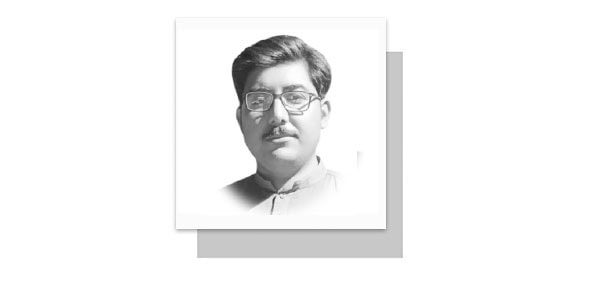THE current taxation system in Pakistan is typical of a developing country stuck in a poor-institution trap.
Weak and extractive institutions, with poor surveillance and a low level of compliance, which are the characteristic of the tax system in Pakistan, have stunted the development of the economy and its people.
As a result, an ideal ground has been laid where the elite and the crony-capitalist flourish while the common people perish.
Pakistan’s taxation system is highly regressive, and despite in the dire need of urgent reformation, the state has often managed to give it its least priority.
With a low tax-to-GDP ratio, stuck around 10.8percent, much lower than the Asia-Pacific average of 19.3 percent over the last couple of years, experts often call Pakistan’s tax system oppressive, lop-sided, flawed, corrupt, and a mockery.
Moreover, the tax-GDP ratio, despite being extractive for the salaried class, has not been able to meet the target of 13.6 percent set by the International Monetary Fund (IMF) for the fiscal year 2024-25.
The lopsided tax system of Islamabad severely disincentivises the complaints.
Tax-compliant entities are increasingly burdened, while those avoiding tax nets, by operating outside the banking system, are spared of new serious consequences.
The salaried class, especially residing in urban centres, overburdened with high income tax rates, faces the major brunt of the flawed system.
As per the recent report, salaried individuals paid a record Rs.391 billion as income tax in nine months of FY 2024-25.
This conclusively establishes Pakistan as a highly discriminatory and distortionary taxation regime where 10 percent of the total income tax collected is being paid by the salaried individuals.
Moreover, the higher taxation on the salaried class has rather become the government’s way to compensate for its inability to expand its tax base due to weak enforcement.
As a result, investment suffers.
Salaried employs, after paying exorbitant taxes, aren’t left with enough disposable income to meet investment goals.
This deters investment into financial markets, and resultant growth of manufacturing and service sector, and in turn, economic growth.
While the effective tax rate on salaried individuals is burdensome, the small business owners, who often operate informally or under the minimum tax regime based on turnover, stand to benefit under the faulty tax regime.
For instance, the retailers, who are mostly unregistered, contributed mere amount of Rs.26 billion.
Islamabad has failed to implement a straightforward solution to the problem, which is the expansion of the tax base.
The incentive structure is also lop-sided in a way, which incentivizes investment in real estate, a non-tradable sector.
This leads to crowding out of investment in areas that enhance production capacity.
Moreover, tax incentives arising from investment in real estate benefit only the rich, as they can afford to deal with real estate.
This stems from a lack of political will and determination to reform the system and penalise tax evasion.
The economy’s annual budget should ideally indicate its development agenda and ways to reform the faulty institutions.
However, Islamabad’s 2024-25 budget lacked any scope for reformation of the tax regime.
The government hiked its defence spending by nearly 15 percent (allocated amount of Pakistani Rs 2,122 billion in the 2024-25 budget), despite the fact that the economy is struggling to secure newer loans from the IMF to meet its fiscal deficits and external liabilities.
The borrowing pattern is so excessive that nearly half of Pakistan’s annual budget is spent on interest payments.
And these interest payments are being funded by the salaried employees, who are unable to get state-backed basic safety nets in return.
Besides, the upcoming visit of the IMF team in Islamabad, in May, to deliberate on the next fiscal year’s budget, may not be a pleasant news for the salaried workers, as the government would be reluctant to introduce significant tax ex-emptions to the salaried class, as they are emerged as a crucial cash crop for the government to meet its fiscal objectives set by the IMF.
Experts has suggested to revise the tax rates applicable to the salaried class, changing the current tax-free threshold from Rs.0.6 million to Rs.1.2 million per annum.
Moreover, the marginal tax rate is highly incentive distortionary for the middle-income class.
Currently, a salary increase from Rs.2.2 million to Rs.3.2 million results in a marginal tax rate spike of 5.26 percent, whereas an increase from Rs.3.2 million to Rs.4.1 million leads to a lesser rise of 3.64 percent.
There is a scope of improvement, and make it more equitable.
This is the poor institution trap, referred to at the beginning of this piece.
The excessive reliance on salaried class as a source for government revenue, has further reduced any incentive with the government to support equitable and supportive tax measures.
The highly educated and high-salaried citizens of Pakistan have better incentive to align their economic allegiance with other nations, where they do not face any economic exploitation as they face in their homelands.
This has been highlighted in the increasing phenomenon of brain drain in Pakistan, thus further staggering its economic growth.
Thus, it is important to have policies, which reform the system drastically and alleviate the structural issues related to taxation.
— The writer is an educator, based in Sindh. (channaassadullah320@gmail.com)


















